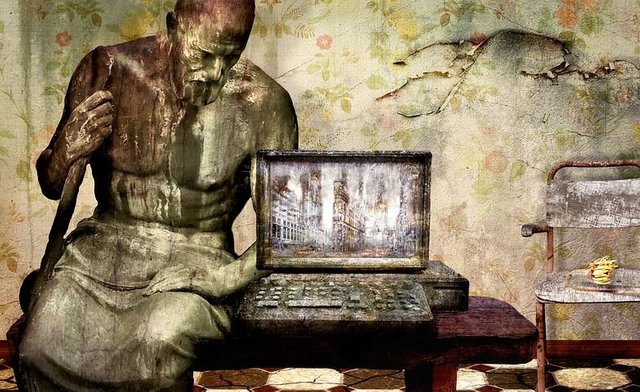WriteAright 2.0! - a 6-day writing Challenge: Tutorial on the History Of Computer || Day 2
The history of computer dates back to 3000 BCE
When Abacus was developed by the Babylonians. The Abacus is made up of frames of beads for simple arithmetical operations such as addition, subtraction, multiplication and division. The abachist principle evolved for a long time. until when it failed in helping man to reach optimal decision.
Professor Charles babbage, a professor of mathematics in Cambridge University developed the difference engine in a bid to solve the problem of the abacus model. Professor Charles worked with lady lovelace who developed the principles for programming the analytical engine. Charles babbage model was able to solve the problem the simplified abacus model was unable to solve.
As the need of man on data usage (analysis) rises because of the spatial complexity led to the emergence of higher other models.
We live in a complex state. Data is anything you give to your computer. Everything we do can be turned into data. The Charles babbage model was considerably good ...it did well but couldn't solve a the complexities but still failed. Based on the death of lady lovelace, she is fondly remembered as the founder of computer software. We have hardware and software.
The software let's the computer know what to do. Every computer has software and there are ones without software (which are referred to single tasking systems or robots). The activities a human does is not single tasked as there are a lot of data encoded in these various actions taken (time space variation).
Computer is a decision support system.
The emergence of the second world war led to a faster development of computers. The British developed the colosus( a very large computer) it was large, almost at the same time, the Americans developed the ENIAC (electronic numerical integrator and calculator). The ENIAC system is large, occupies a lot of space and consumes a lot of power. However, it's outcome/output are all reliable.
The all reliability of the ENIAC system was because of it's major components were vaccum tubes and vials. However, it responds quickly to fluctuations (especially due to power). Despite the unreliability of the ENIAC system, it optimizes it's objective functions.
During the war years, it solved the problem of data analysis. With the development of the transistors, chips, integrated circuits and motherboards led to the miniaturization of the system electronic components. The systems becomes smaller with portability advantage.
system is that in which all the attributes works together to optimize an objective function. In a system, there are no independent state principles. There are two types of systems....opn and closed system.
In an open system, there are free flows of energy. This implies that a system can receive and give freely.
A closed system does not give and does not receive.
Actually, almost every thing on Earth is an open system example, river, trees, humans etc. It is rare to find a closed system which are most times seen in the laboratories.
In an open system, when there are malfunction of certain systems, the system undergoes a cybernetic process. Under this process, the functional components Aids the malfunctioned components for it to undertake a task. At that level, the components functions at a sub optimal state.

It is the software that tells the computer what to do.
Hi @mesonia
Please edit those words from your post as it showed 3% plagiarism
Again make your post in short paragraph so that it will be easy to read than long paragraph
Let me know when you remove those words, thank you